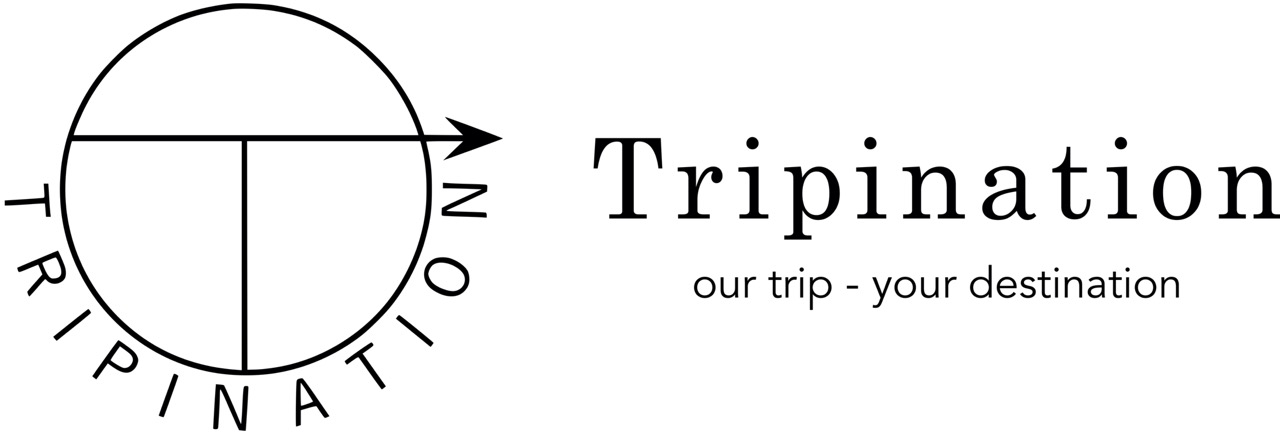Mallorca in winter? Is it worth visiting the largest Balearic island, even in winter (January)? We spent the first week of the new year (and the last day of last year) on Mallorca. The weather, the sights and, above all, the atmosphere – what makes Mallorca particularly “special” in winter? We had the pleasure of spending a week on this Spanish island and are happy to share our experiences with you here. Have fun reading.
Mallorca – it’s not just “Ballermann” and “beach parties”. Here, where the sun beats the almond trees, there is more to discover than just sipping sangria. The island is multi-talented: it juggles culinary delights, dances with traditional festivals and impresses with breathtaking bays, as if every stretch of coastline were an Instagram hotspot. You can find great ideas for other things to do at GetYourGuide*.
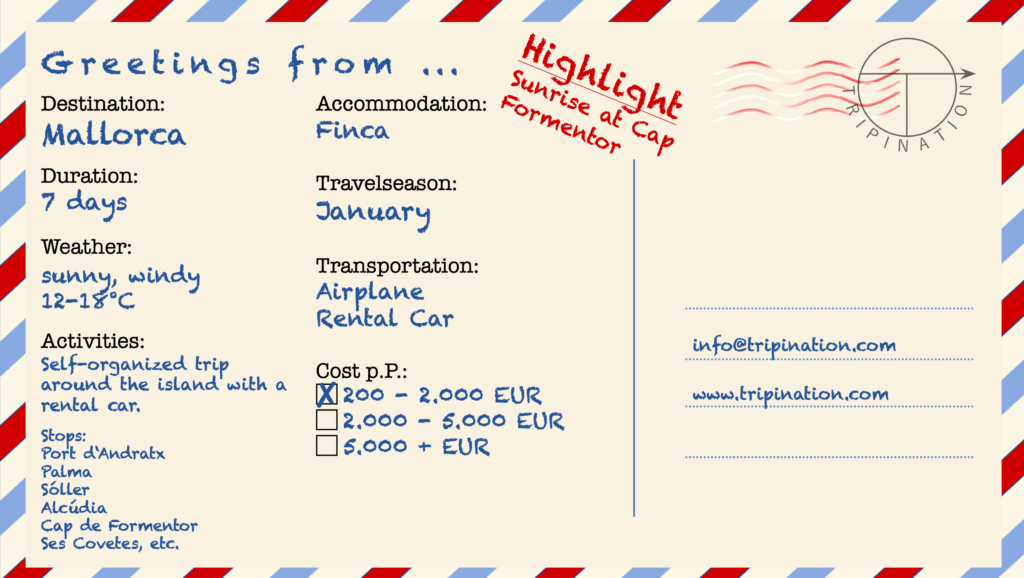
Port d’Andratx
Port d’Andratx on Mallorca is like a hidden gem tucked away on the edge of the island and was our first destination on the day we arrived. Here, where the deep blue water meets the terracotta-colored roofs of the villas, a picturesque coastal panorama unfolds. The promenade meanders elegantly along the harbor, lined with charming cafés and exclusive boutiques. Sailing boats sway to the rhythm of the Mediterranean and the sun paints golden reflections on the surface of the water. Port d’Andratx is not just a port, but a poetic symphony of luxury, serenity and Mediterranean flair – an oasis that enchants every visitor with its incomparable charm. On New Year’s Eve, we rescued a man from his moped and, of course, wished Artur a happy birthday.
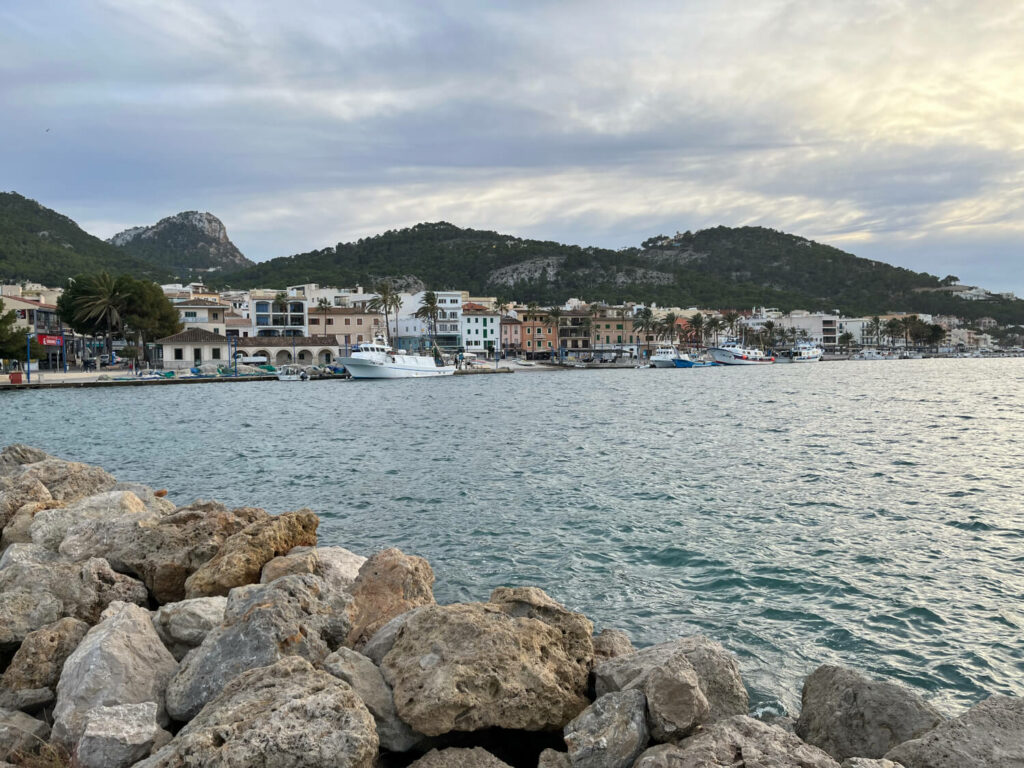
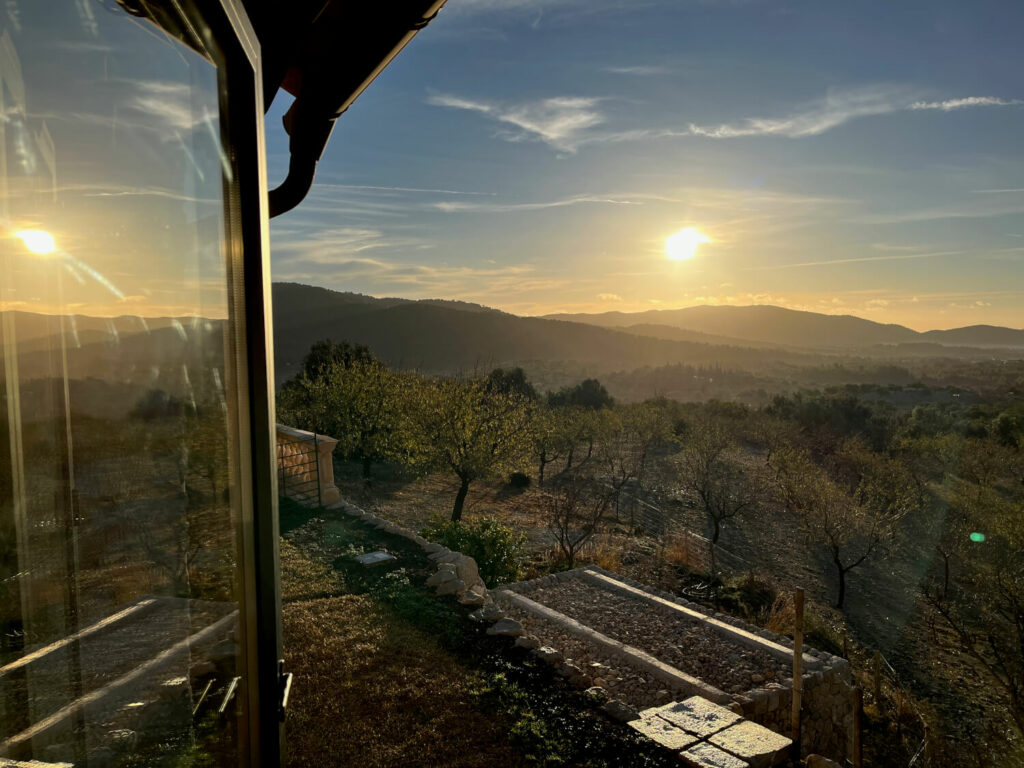
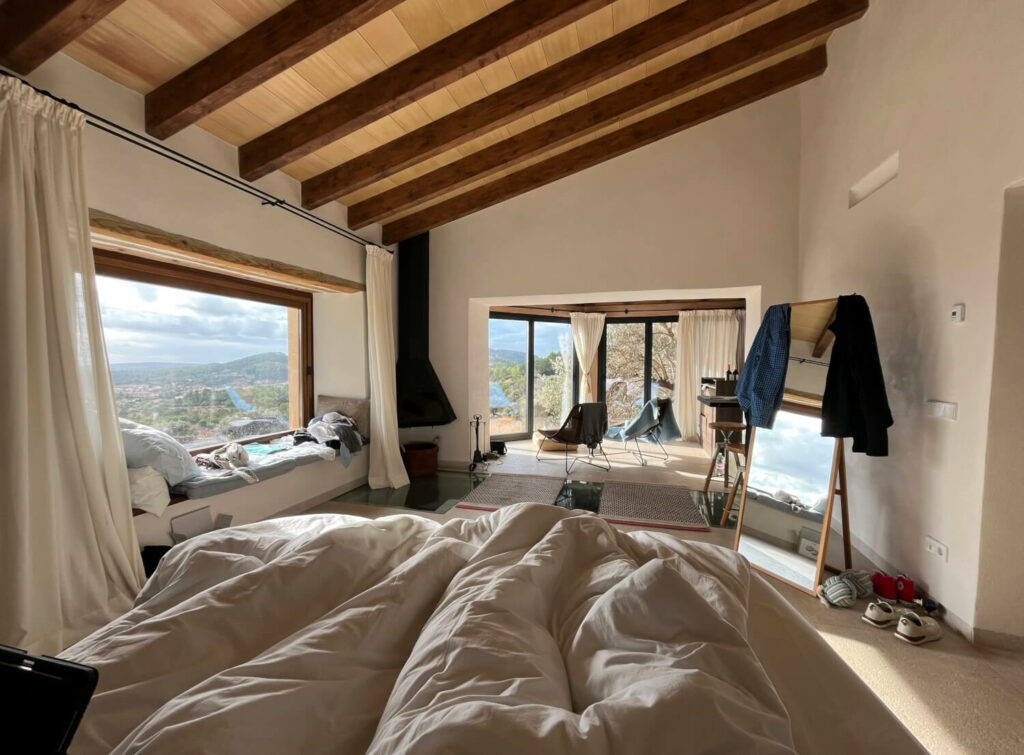
Es Capdellà – listen to the peace and quiet of Mallorca
In this charming village, we had our accommodation somewhat secluded in the fields and on the mountainside. We came across this gem via Airbnb and were thrilled. Minimalistic, quiet and absolutely authentic. Plus a great hosts. We had found the perfect base. So if you’re looking for a real “finca”, you have to go to Es Capdellà. The Bar Nou restaurant offers the best value for money in Mallorca and there is also a super supermarket (Sa Botiga d’en Lluís). Of course, you can also find great accommodations via Booking.com*.
From the south to the north of Mallorca
Our first short tour took us to the hilly north of Mallorca. We booked our rental car via Check24*. As the rental price was very reasonable at around €125 for a week, we were able to get over the fact that the car wasn’t in top condition (bodywork was damaged, dirt inside and out, windshield wipers were more of a decoration, etc.). The condition of the rental car was to deteriorate considerably over the course of the vacation. But more on that later.
The first stop here was Valldemossa, a picturesque village on Mallorca. It impresses with its cobbled streets, charming squares and a backdrop of green hills. Famous for the Carthusian monastery where Chopin and George Sand once stayed, Valldemossa exudes a quiet elegance and cultural history that extends from its narrow streets to the picturesque mountains. A place that invites you to linger between historical heritage and Mediterranean flair.
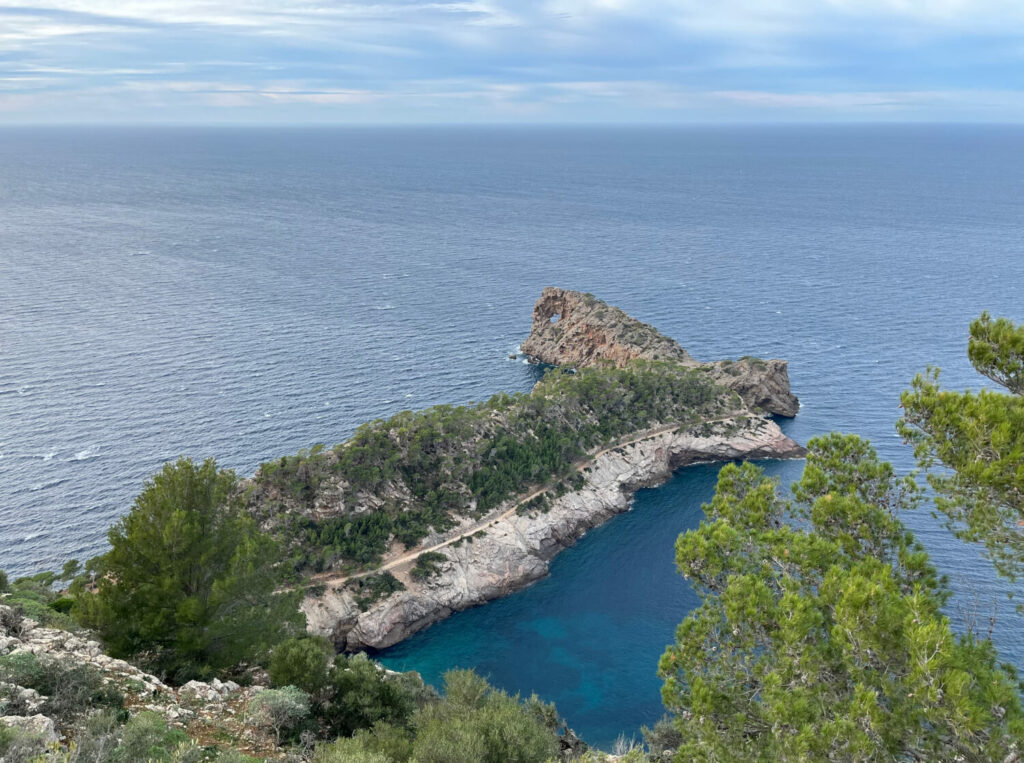

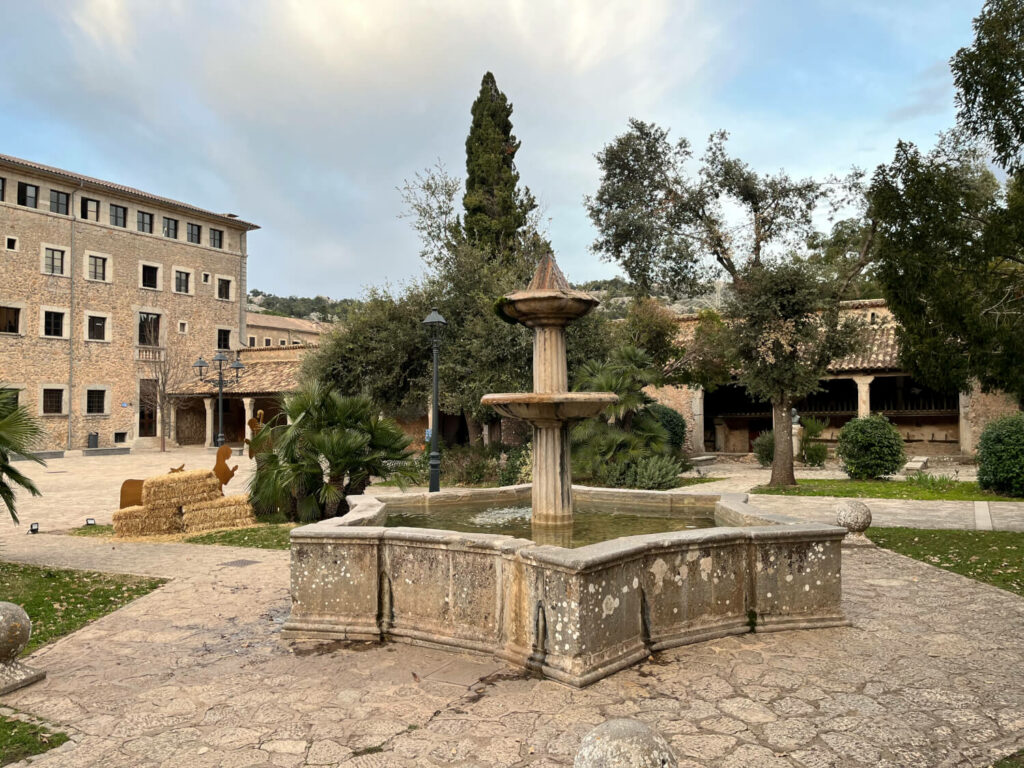
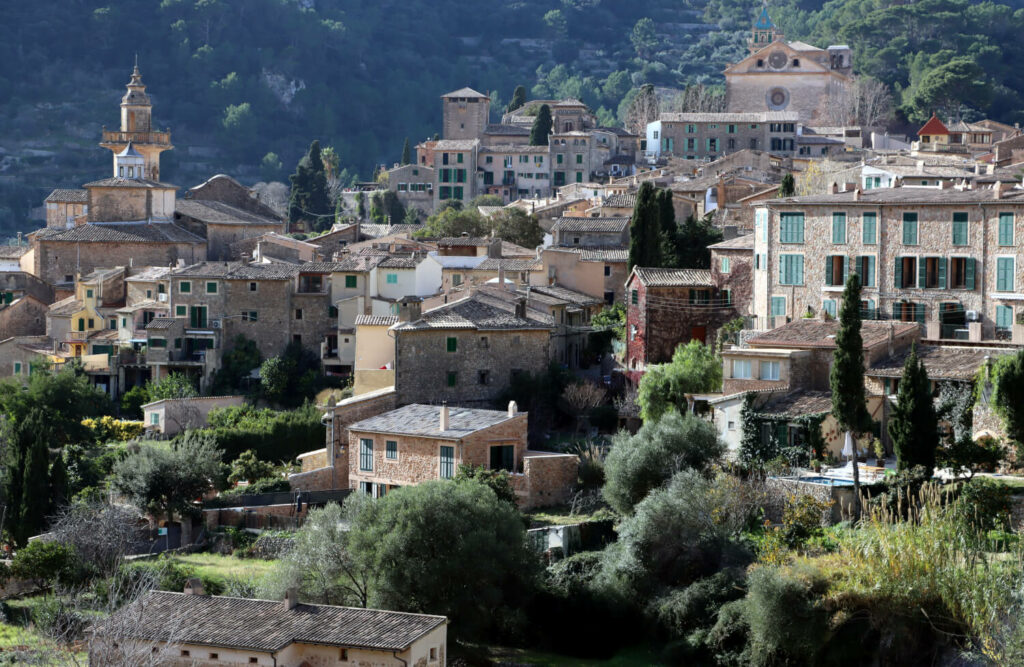
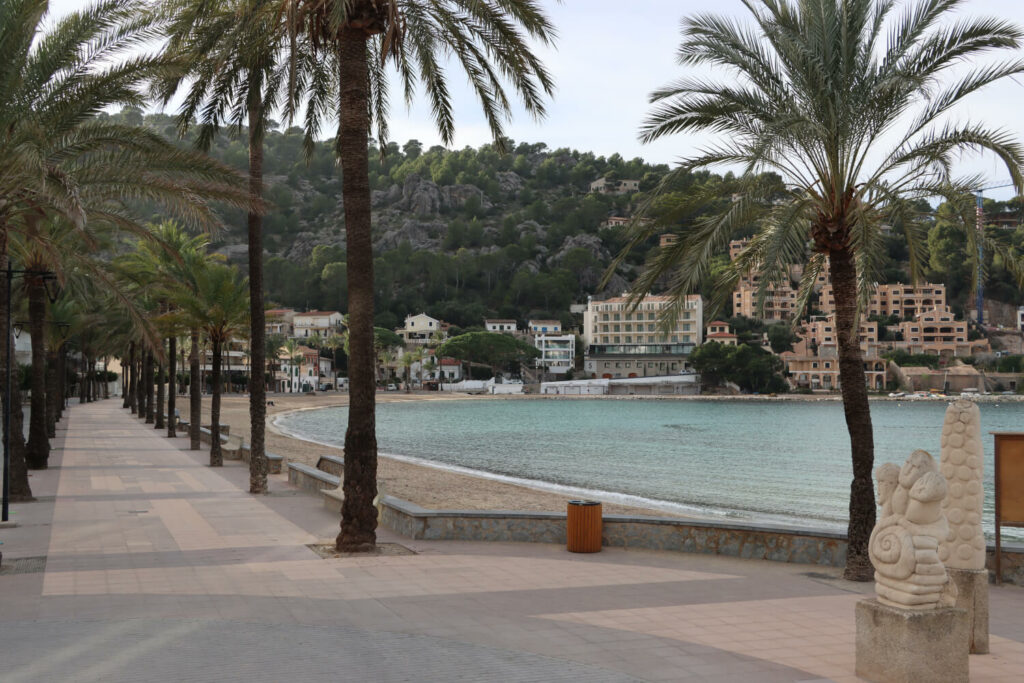
Port de Sóller
Not far from Valldemossa is the Sa Foradada peninsula. From the cliffs, you have a great view of the peninsula and the sea. The viewpoint is located next to the impressive Finca Son Marroig. This not only offers a breathtaking view of the Mediterranean, but also a romantic garden with lush vegetation. Known for the neo-Gothic house and gardens built by Archduke Ludwig Salvator of Austria, Son Marroig is a poetic retreat that combines history, nature and a panoramic view that touches the soul. Provided you check the opening times beforehand and don’t find yourself – like us – standing in front of closed gates.
The pearl of the north
We continued along the cliffs through the mountains to Sóller and then to Port de Sóller. Our first stop in Sóller was the Plaça de la Constitución with the magnificent church Iglesia de Sant Bartomeu de Sóller. We also had the perfect timing and were able to see the Ferrocarril de Sóller – a nostalgic train – departing. Sóller, nestled in the Tramuntana mountains on Mallorca, continues to fascinate with charming cobbled streets surrounded by citrus plantations and olive groves. The town itself impresses with its historic architecture and lively atmosphere. Port de Sóller, the port of Sóller, is a picturesque coastal town with a protected natural harbor. Colorful fishing boats and Mediterranean cafés meet here, while the mountain backdrop lends the town an incomparable beauty. Both places are a harmonious duo of mountain idyll and coastal charm.
We ended the excursion in Lluc. Because on Mallorca the distances are short, but the journey times are long and the sun set around 6 pm. Lluc, nestled in the majestic Tramuntana mountains on Mallorca, is best known for the Santuari de Lluc monastery, a spiritual center of the island. The peaceful surroundings offer visitors not only spiritual experiences, but also the opportunity to explore the impressive natural mountain landscape. Surrounded by quiet forests and a tranquil atmosphere, Lluc is a place of contemplation and respect for Mallorcan history and nature. Incidentally, we had dinner that day in Calvià and Rosita’s bar.
The longest day
Our longest tour began early in the morning with a beautiful sunrise over Es Capdellà. Our route took us far to the north past the picturesque Port de Pollença and the El Colomer viewpoint (perhaps the best viewpoint in the whole of Mallorca) to the remote Far de Formentor. A lighthouse on the magnificent coast of Mallorca that is still in operation. Incidentally, Cap Formentor is completely accessible in winter. In summer, however, it is closed to private car traffic.
We continued on to Platja d’Alcúdia. Platja d’Alcúdia on Mallorca is a stunning beach on the north coast of the island, known for its fine white sand and clear turquoise waters. This extensive beach stretches for several kilometers and offers ideal conditions for water sports activities as well as relaxed sunbathing. The surrounding region also offers a variety of restaurants, stores and leisure activities, making Platja d’Alcúdia a popular destination for holidaymakers.
What do you do next on such a wonderful sunny day? That’s right, you head to the Coves del Drac and go underground (please note the tour times here). The Coves del Drac, also known as the Dragon Caves, are a fascinating natural attraction on Mallorca. These stalactite caves are located near the town of Porto Cristo and impress visitors with their impressive formations of stalactites and stalagmites. The highlight of the caves is the underground lake Martel, one of the largest underground lakes in the world, where regular boat trips with musical accompaniment take place to experience the surreal beauty of the caves.
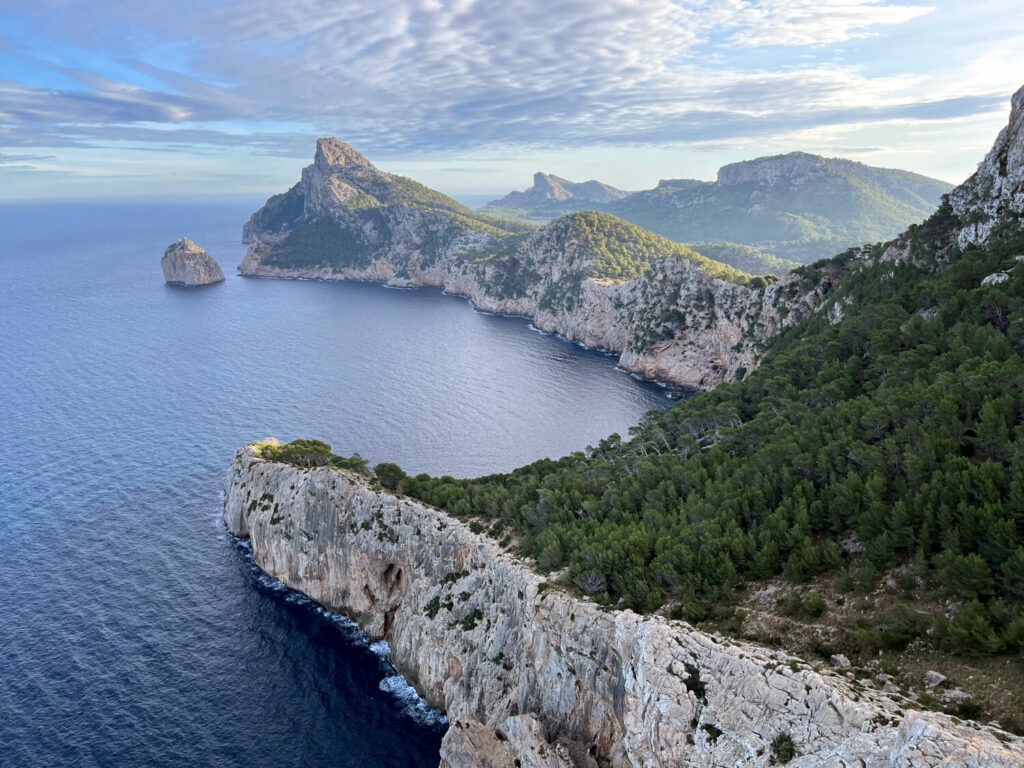
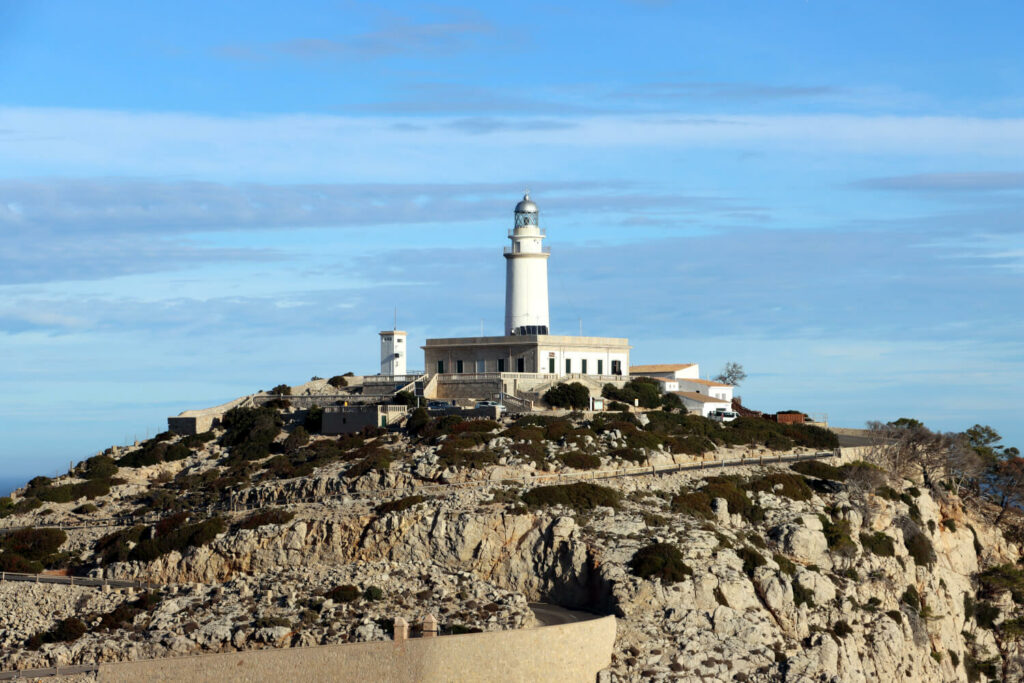
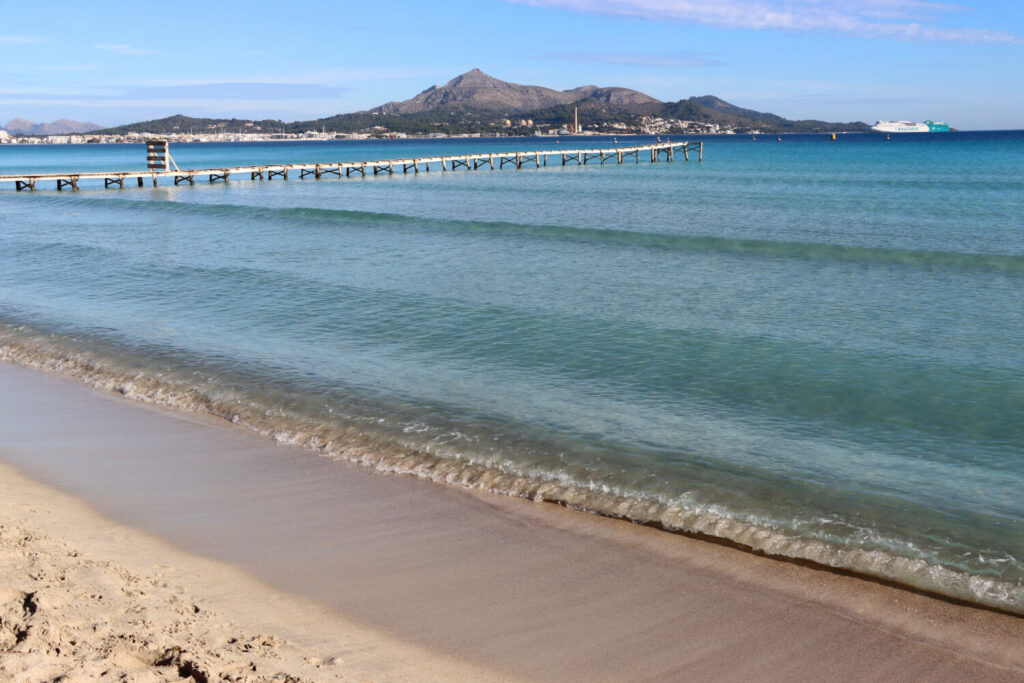
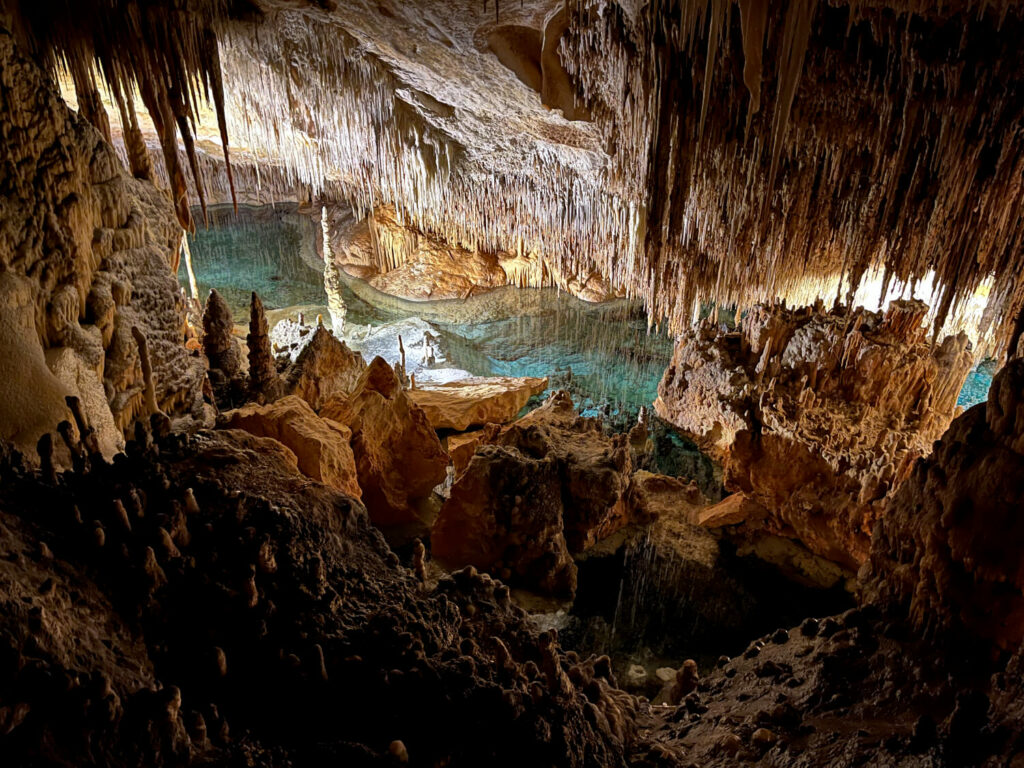
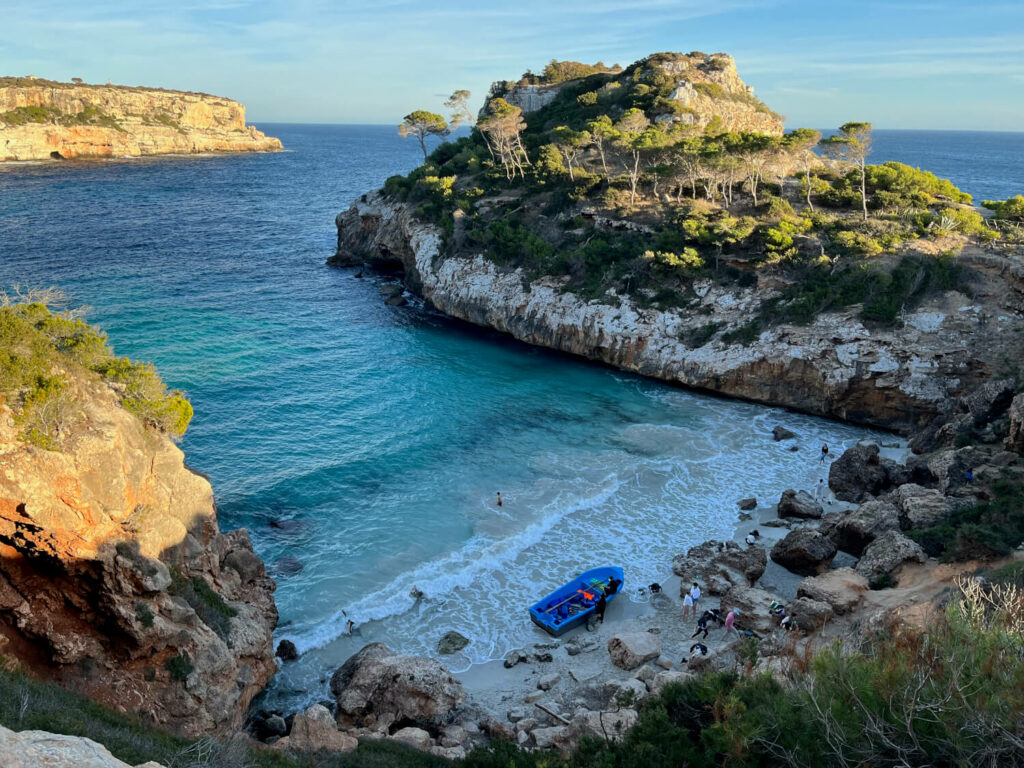
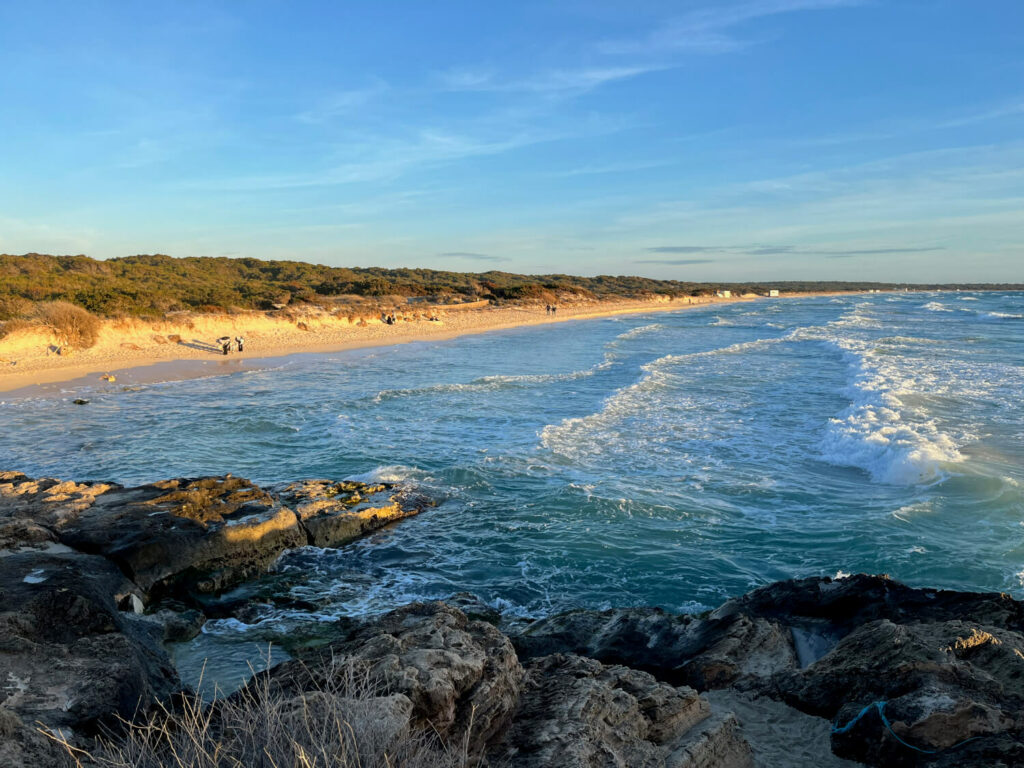
Mallorca – Diversity in a small space
We headed south along the picturesque country roads of Mallorca to Caló des Moro. Caló des Moro is a breathtaking bay in Mallorca, known for its unspoiled beauty and turquoise waters. Surrounded by rocky cliffs and pine forests, this small bay is a picturesque sight. The fine sandy beach and crystal clear waters make Caló des Moro a popular destination for sun worshippers and nature lovers, although access can be a little adventurous (as it is actually privately owned).
We spent the penultimate stage of this eventful day at Platja des Trenc and were there in time for the impressive sunset. Platja des Trenc itself is an extensive natural beach on the south coast of Mallorca. Known for its fine white sand, clear turquoise waters and natural surroundings, this beach offers an idyllic setting. The shallow sea and dune landscape make Platja des Trenc a popular place to relax and enjoy nature.
The end of the day was celebrated – how could it be otherwise – at Platja de s’Arenal and Balneario 6 (after all, Malle is only once a year…). At the Bierkönig, the beer was emptied, the sangria tasted and the free shirt dusted off. It was quite a surprise for us that the Bierkönig was open. There were also more people there than expected. Nevertheless, here in the Bierkönig we felt that Mallorca in winter seems more like a fading party where only those who retain their deep commitment to the island remain.
The capital of the island
Before we could take off, we had to visit Palma, of course. In January, Palma has a calm, relaxed atmosphere. Temperatures are mild at an average of 14°C, ideal for leisurely strolls along the picturesque Paseo Marítimo promenade or through the charming alleyways of the old town. The historic La Seu Cathedral shines in the winter sun, while cafés and restaurants keep their doors open to enjoy traditional Mallorcan specialties. A visit to the Almudaina Royal Palace and Bellver Castle offer an insight into the city’s rich history as well as a great view of it. Overall, Palma in January presents itself as a peaceful place that combines authentic island life and cultural treasures. Furthermore, the city is still lit up for Christmas and exudes a fairytale magic.
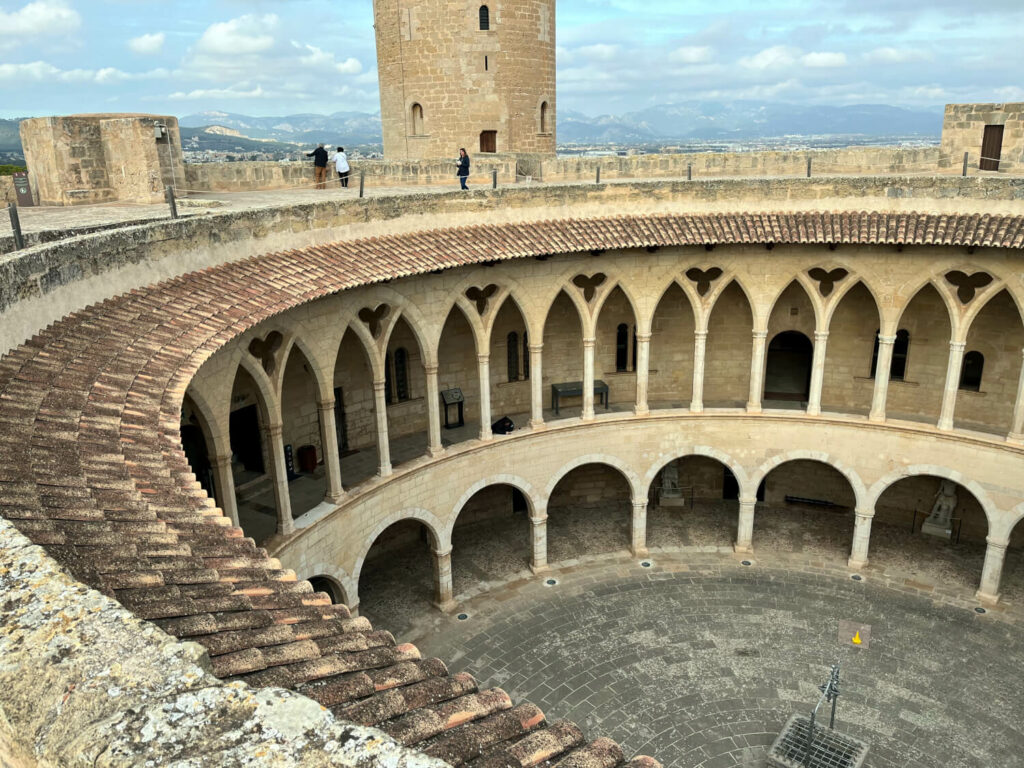
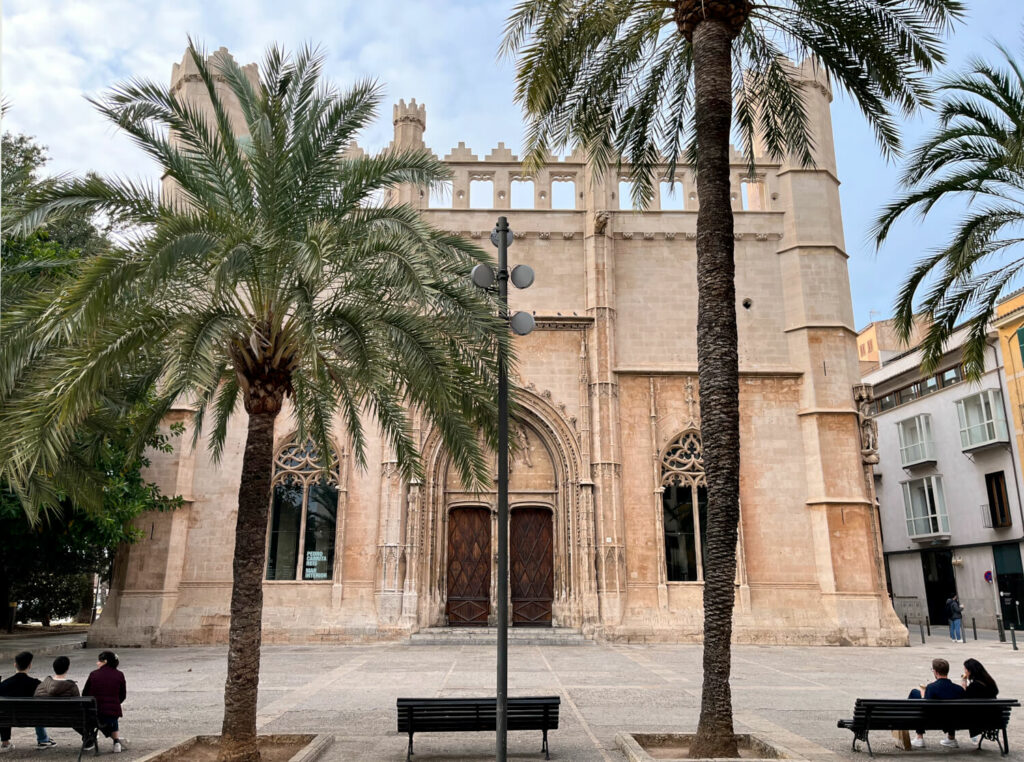
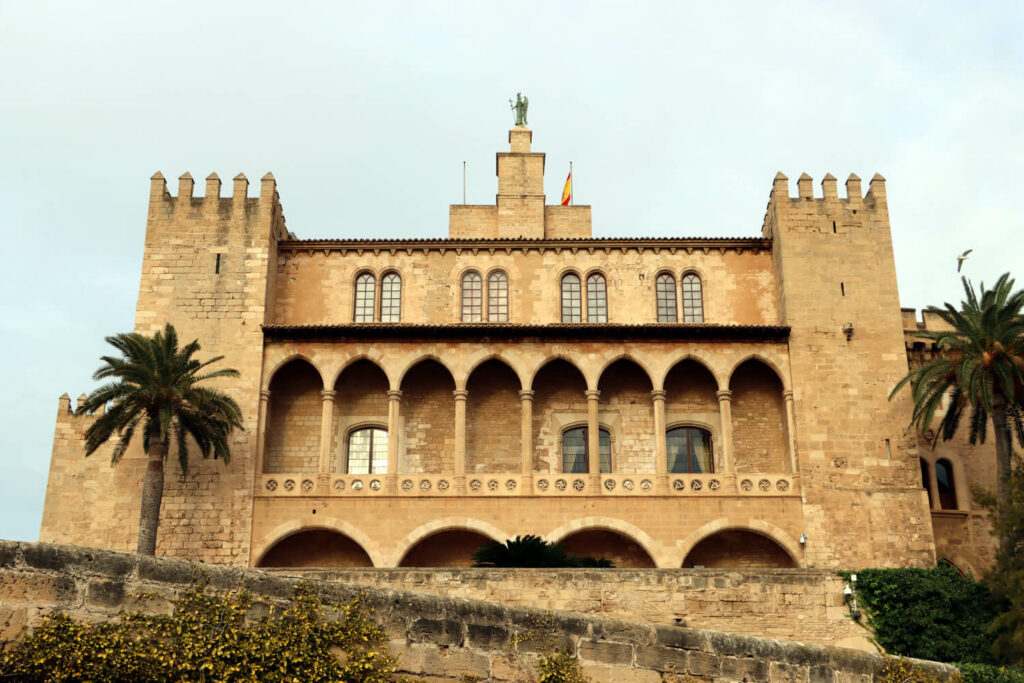
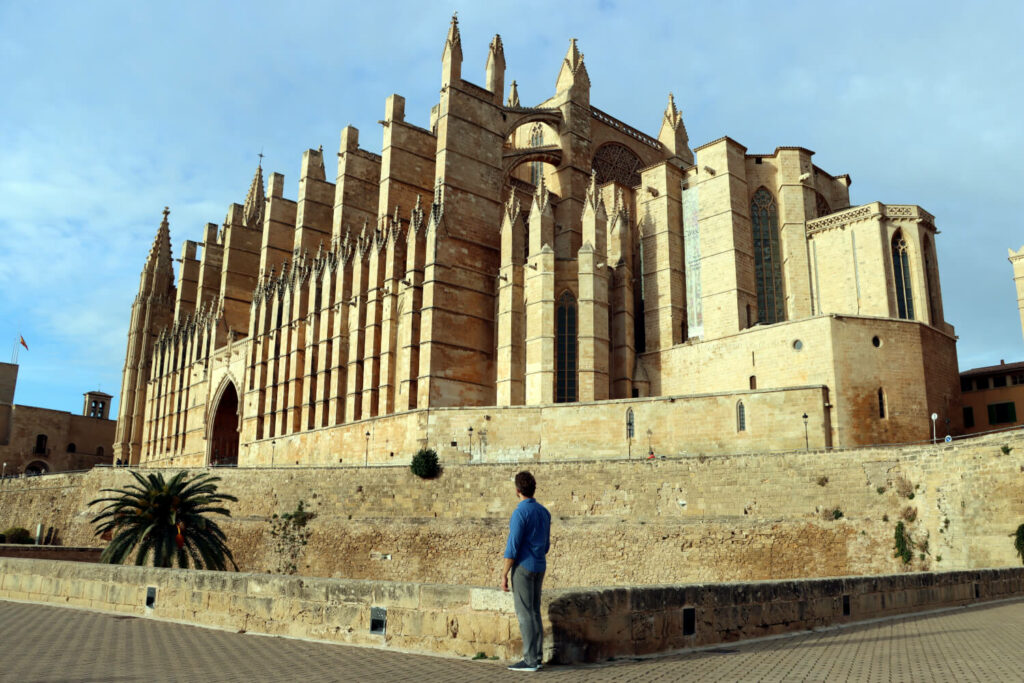
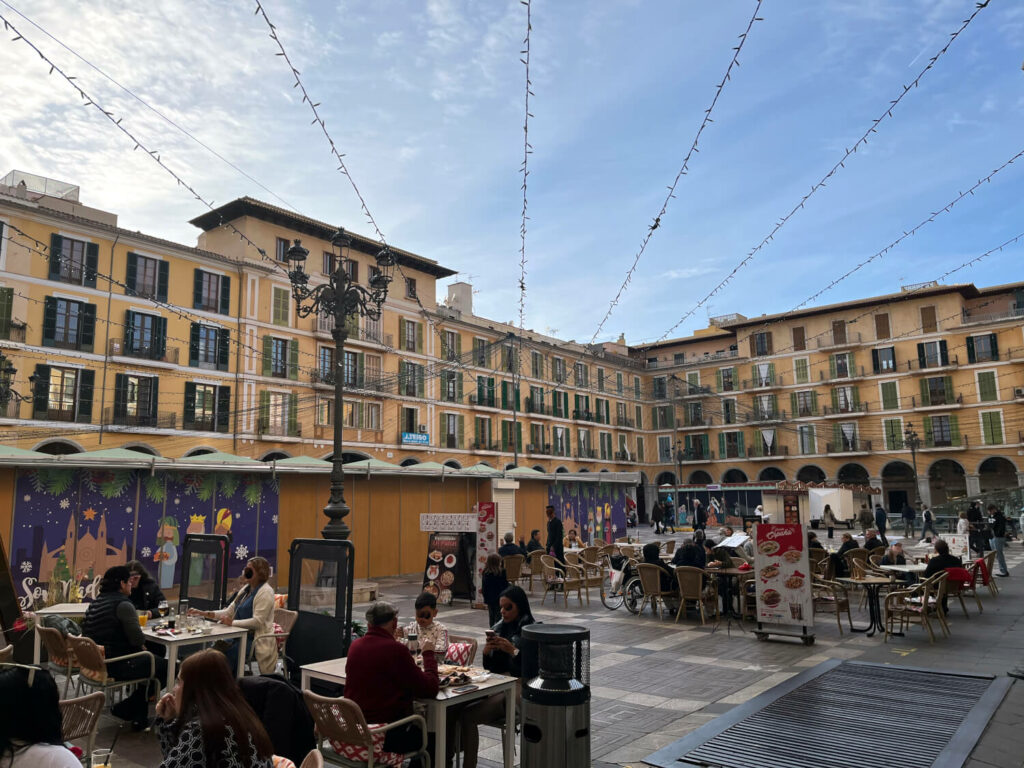
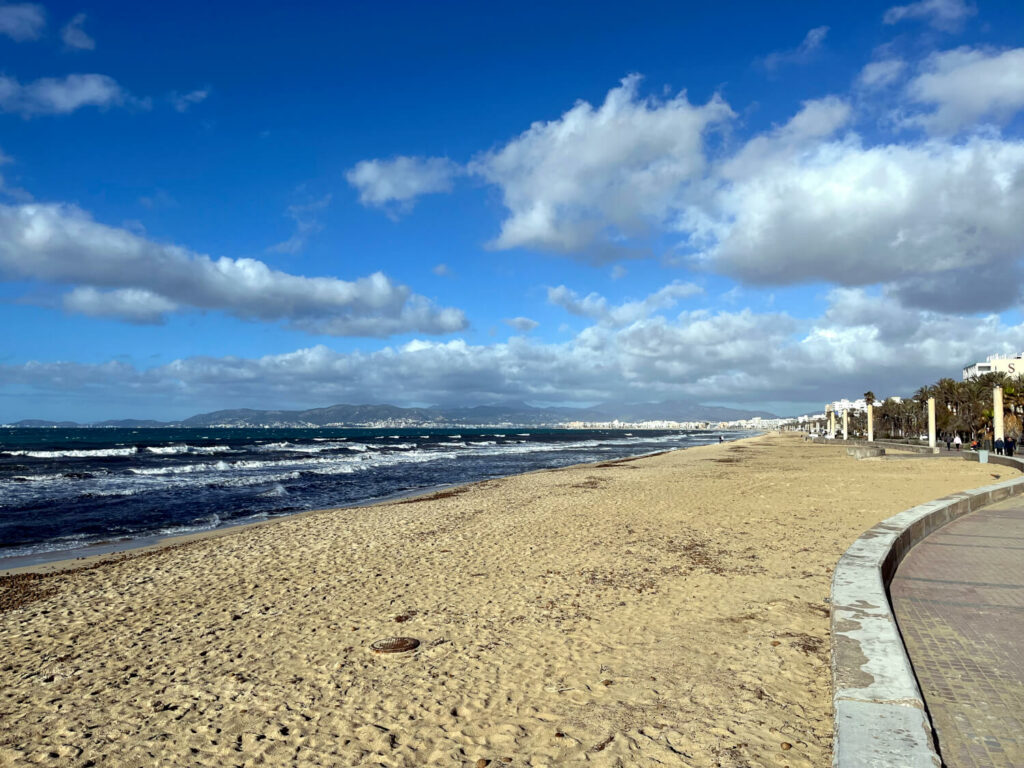
The Llotja de Palma is an impressive Gothic building in Palma that was built in the 15th century. The trading house once served as a meeting place for merchants and is now known for its imposing architecture with slender columns and ornate decorations. Visitors can discover the historical significance of the building and experience the impressive atmosphere of this cultural gem.
Plaça Major in Palma is a central square surrounded by historic buildings with characteristic arcades. This lively place offers a variety of cafés, restaurants and stores where visitors can enjoy local food and craftsmanship. With its vibrant atmosphere and occasional events, Plaça Major reflects the heart of urban life on the island.
Broken glass is good luck
On the departure day of our great stay on Mallorca, we visited the Platja de Palma and enjoyed a real German breakfast in the Deutsches Eck. What we didn’t know was that our rental car was being cleared out at that very moment. As I always travel like a homeless person, I hardly suffered any damage. It was a bit more drastic for my girlfriend. Well, another lesson learned. Thank you Malle.
Regardless of this little eyesore at the end, our Mallorca January idea turned out to be a damn good one. We can only recommend a visit to this beautiful island. The weather also plays along; the crowds are manageable; paella, tapas, fish and sangria taste delicious and, above all, you can escape the local (German) weather. Even if Germany also has beautiful places – see here.
There are many beautiful spots on Mallorca. In the west you will find Port d’Andratx; in the north Sóller; in the east Coves del Drach and in the south Platja des Trenc.
In areas with a lot of tourists, prices are relatively high (e.g. in Palma). However, as soon as you get to the countryside, prices are below average compared to Germany (although the quality does not suffer).
The best time to visit for a beach vacation is between May and September. However, this is also when you can expect the most tourists. For cyclists and hikers, all other months are suitable for a visit.
*The links to Check24, Booking.com and Getyourguide contained in this article are so-called affiliate links. With these links, tripination.com receives a commission for brokered purchases. This does not increase the price for the customer.
